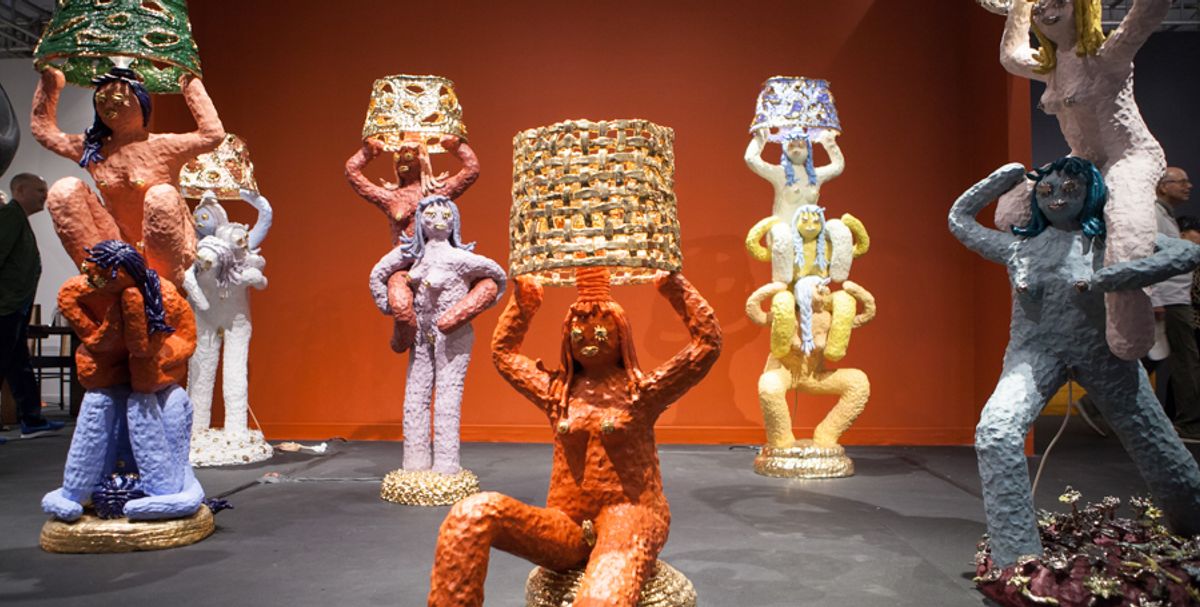In its final iteration before moving from its current home, which is due to be transformed into a public park, Design Miami (until 9 December) presents design to suit all budgets and tastes. From lady lamps that light up at the touch of a nipple to experimental Italian design, here are some pieces from the 14th edition that caught our eye.
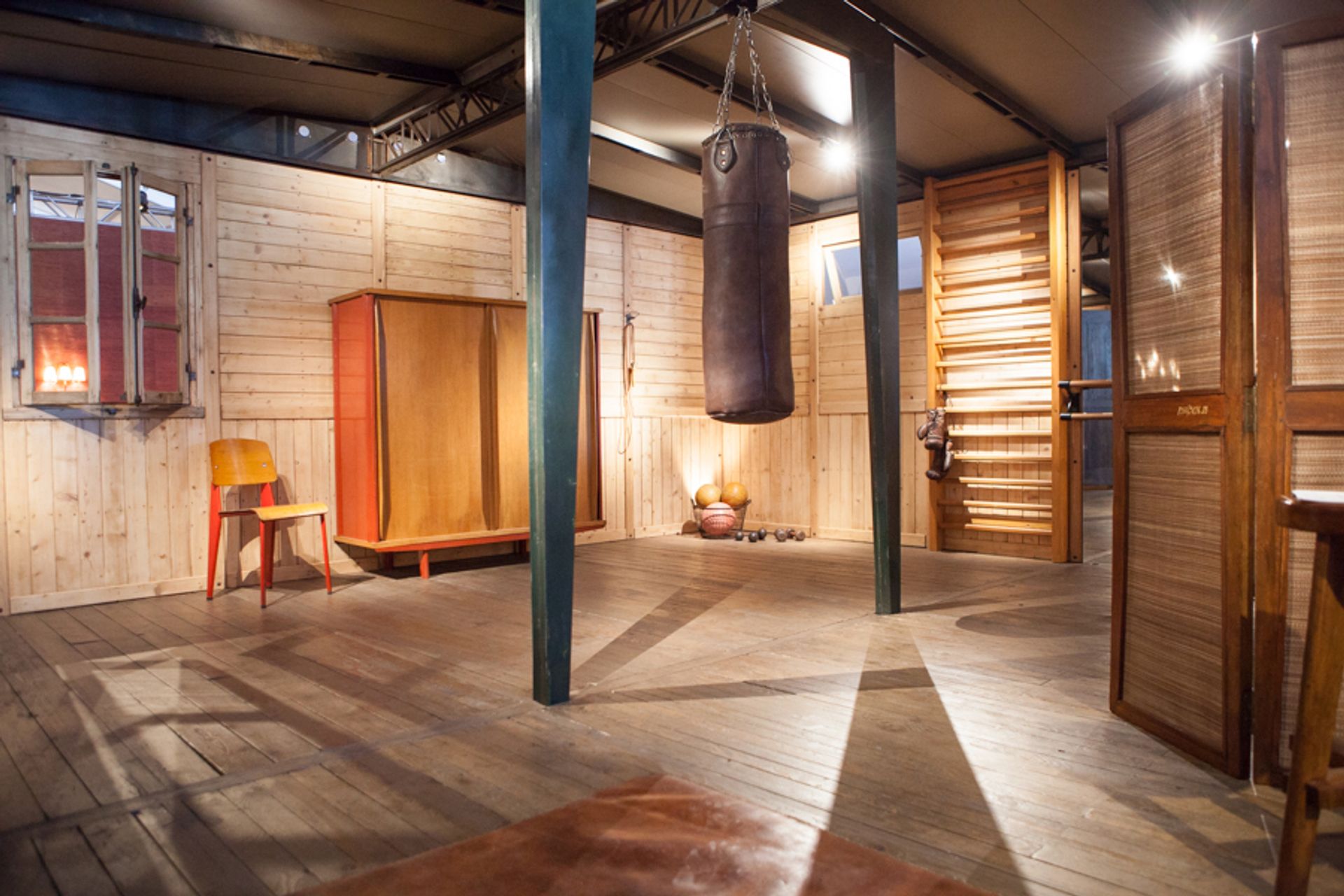
It may look like a chic wooden cabin, particularly given that it accommodates a spacious fitness room, but this 6m by 6m structure was originally designed by the French architect Jean Prouvé to rehouse French families whose homes were bombed in the Second World War, and could be put together by a team of just three people in less than a day. The space now has an entirely different, more relaxed purpose, with areas set aside for yoga and meditation. Jean Prouvé 6 x 6 Demountable House (1944) Galerie Patrick Seguin; $1.25m. Photo: © Vanessa Ruiz
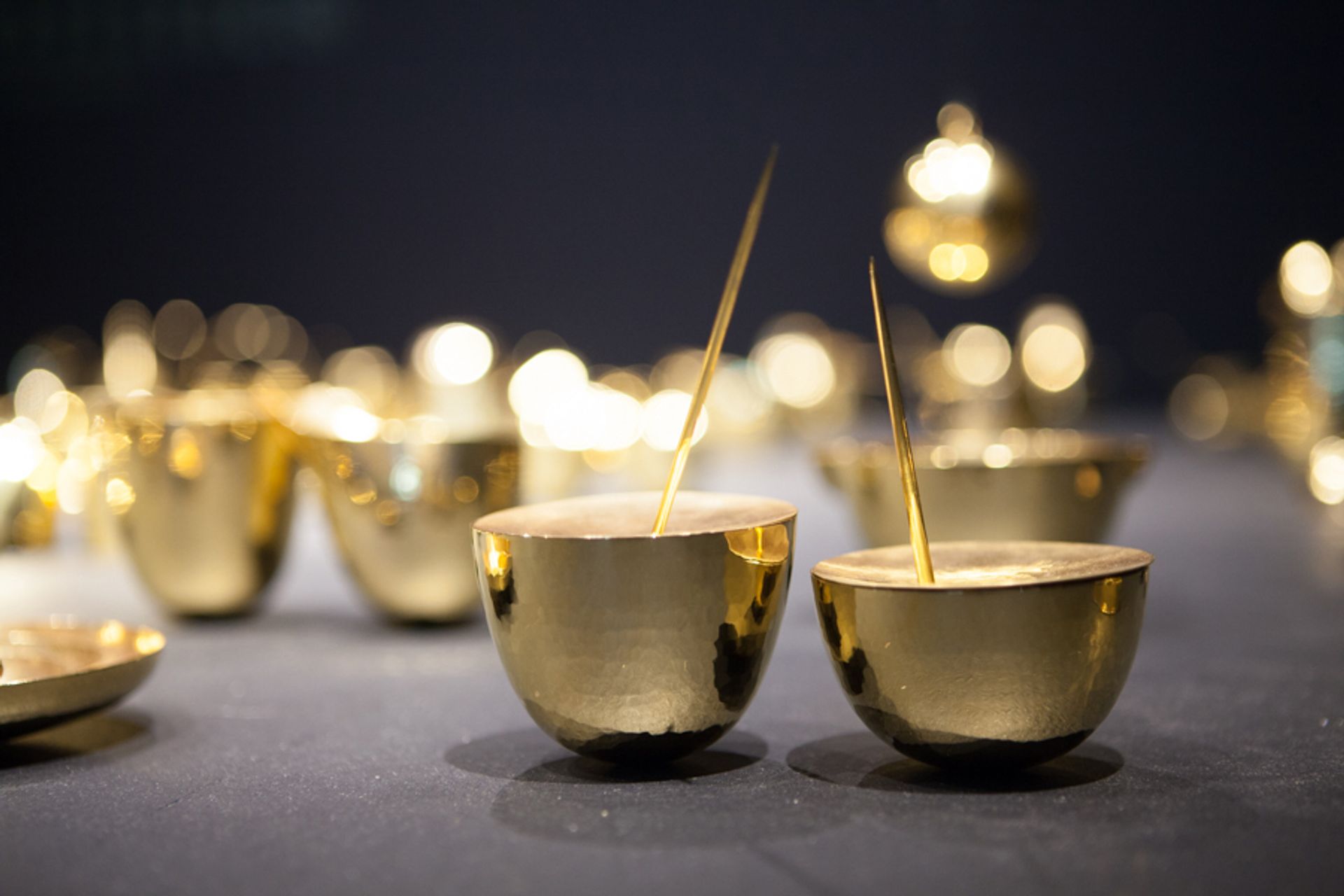
This hoard of 100 simple, golden forms by Nadja Zerunian belies the complexity of the Austrian designer’s inspiration— relationships. The titles range from Deceptive Submission to Decisive Loyalty. “I was inspired by a photograph of Alberto Giacometti with one of his muses and the complex relationship between them,” Zerunian says. The small objects—bowls, jugs, balls and spoons that touch and balance on each other—are made from copper, silver, brass and gold, in collaboration with Transylvanian Roma artisans. Nadja Zerunian, Liabilities (2018). Curio section; $2,400-$3,200. Photo: © Vanessa Ruiz
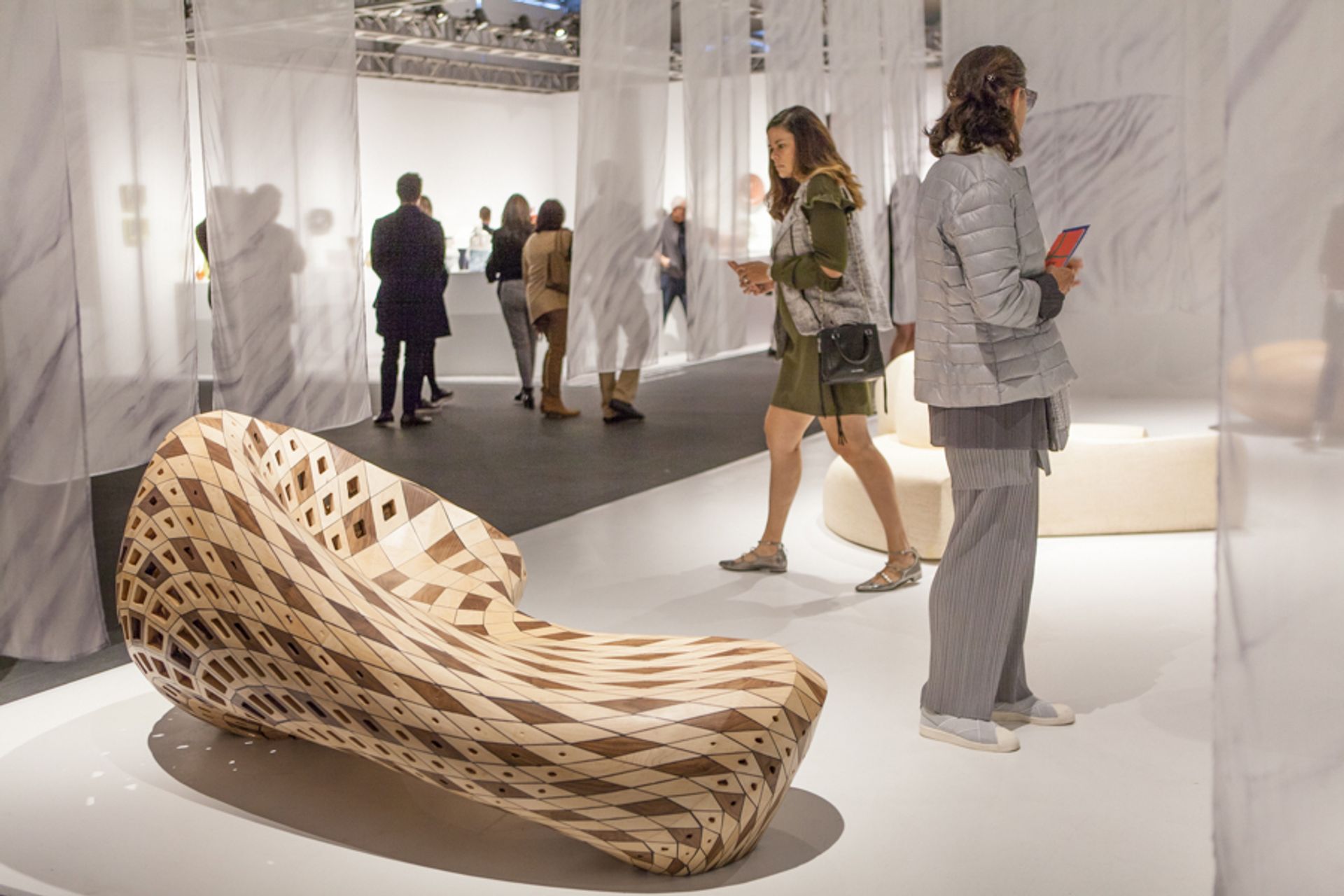
The New York-based gallery Friedman Benda’s stand is a zen-like space in the middle of the bustling fair. Fluttering marbled fabric, designed by Calico Wallpaper, encloses a contemporary take on the traditional Japanese rock garden. The Dutch designer Joris Laarman put together his sculptural bench—made up of intricate diamond-shaped pieces of maple and North American walnut—so that the geometric forms created a smooth, pebble-like wood sculpture. Joris Laarman Maker bench (Diamond) (2018) Friedman Benda; prices on the stand range from $16,000 to $135,000. Photo: © Vanessa Ruiz
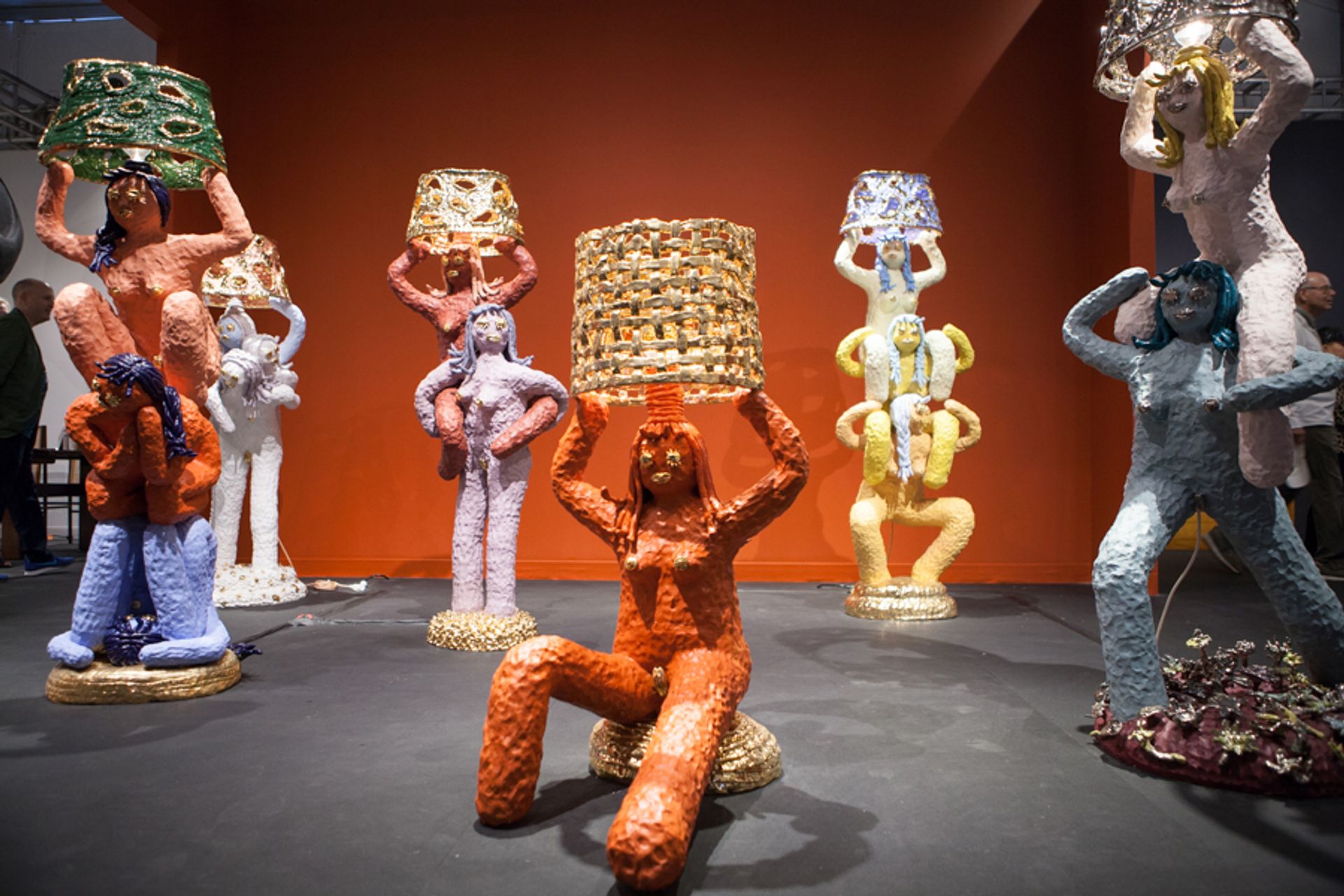
The “girls” on R & Company’s stand are having a lot of fun. The piles of female forms that make up Katie Stout’s lamps are confident and provocative, with switches masquerading as nipples and anuses, and electric cords trailing from their vaginas. “They are clearly grown women, but Stout purposefully calls them ‘girls’ to comment on how society disempowers and fetishises women,” says a spokeswoman for the New York-based gallery. All the lamps sold on the fair’s opening day. Katie Stout Girl Lamps (2018) R & Company; $45,000-$55,000. Photo: © Vanessa Ruiz
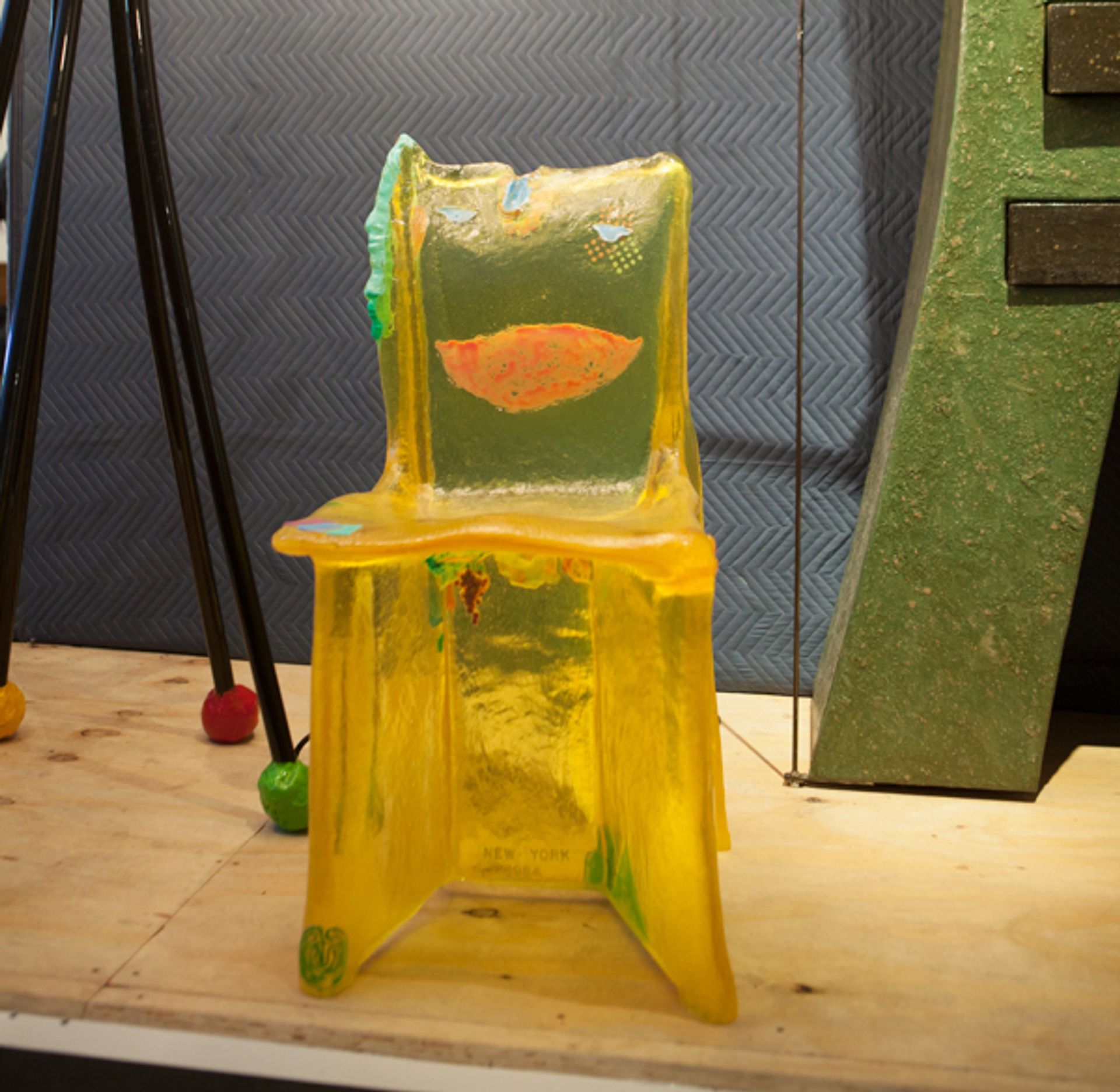
In a Goldilocks-esque experiment in 1984, the Italian designer Gaetano Pesce cast nine chairs from the same mould, using a resin formula that he altered slightly each time. The early forms were gloopy and disintegrated instantly, while the final chairs were too hard and uncomfortable. But number seven? Well, that was just right. Pesce has made 16 new Pratt chairs (named after the art and design school in Brooklyn, New York, where they were first conceived), each in a different colour. Gaetano Pesce Pratt Chair #7 (1984/2018) Salon 94 Design; $30,000. Photo: © Vanessa Ruiz
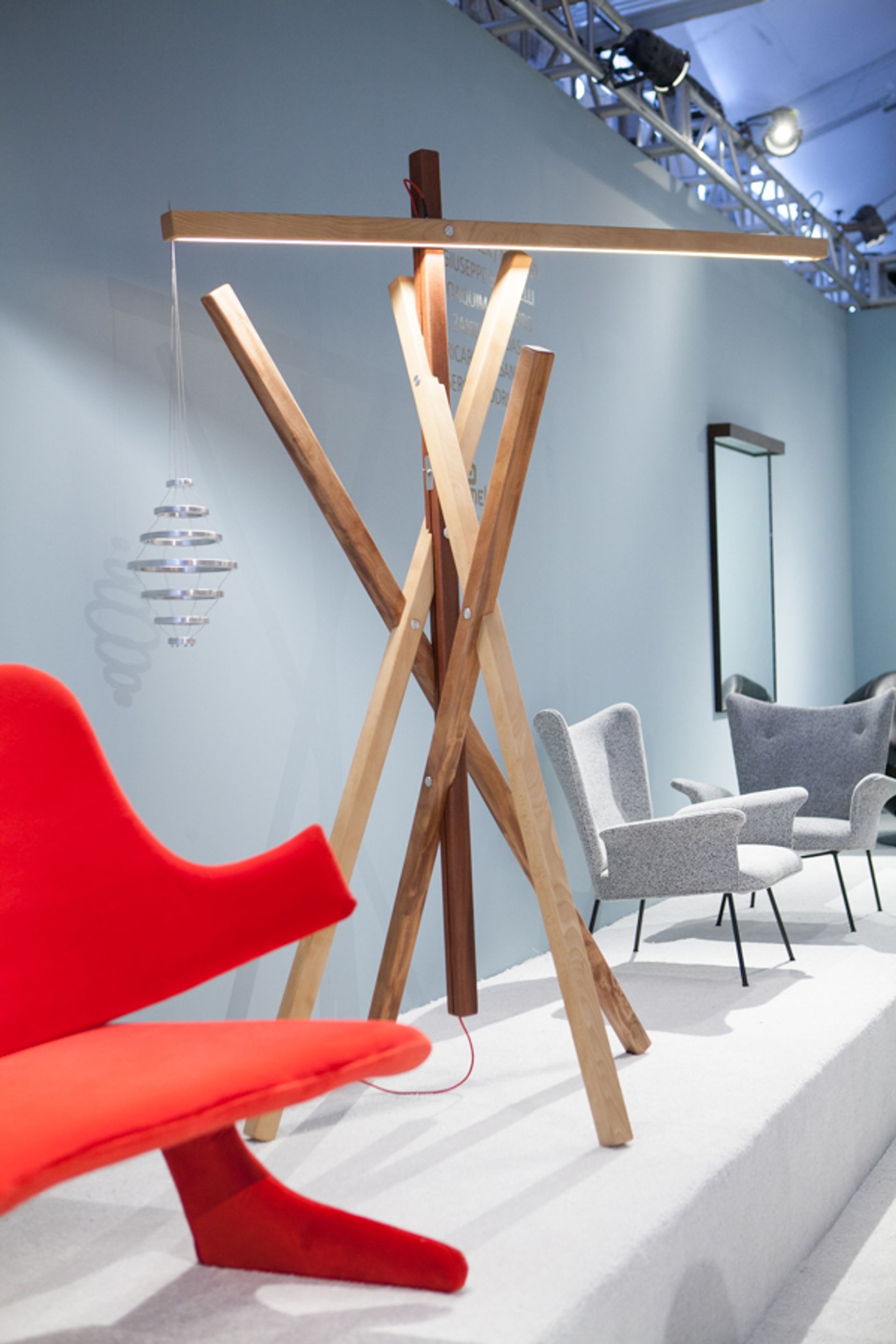
The Ninho lamp (“nest” in Portuguese) by the Rio de Janeiro-based design duo Estúdio Mameluca represents “all of Brazil’s heritages coming together”, says one of the designers, Nuno FS. The 2m-tall light is made from three types of wood: massaranduba, which represents the indigenous people of Brazil; African mahogany for Africa; and faya wood to symbolise Europe. “The aluminium pendulum is what balances them all,” he says. Estúdio Mameluca Ninho lamp (2015/2018) Mercado Moderno; $17,000. Photo: © Vanessa Ruiz
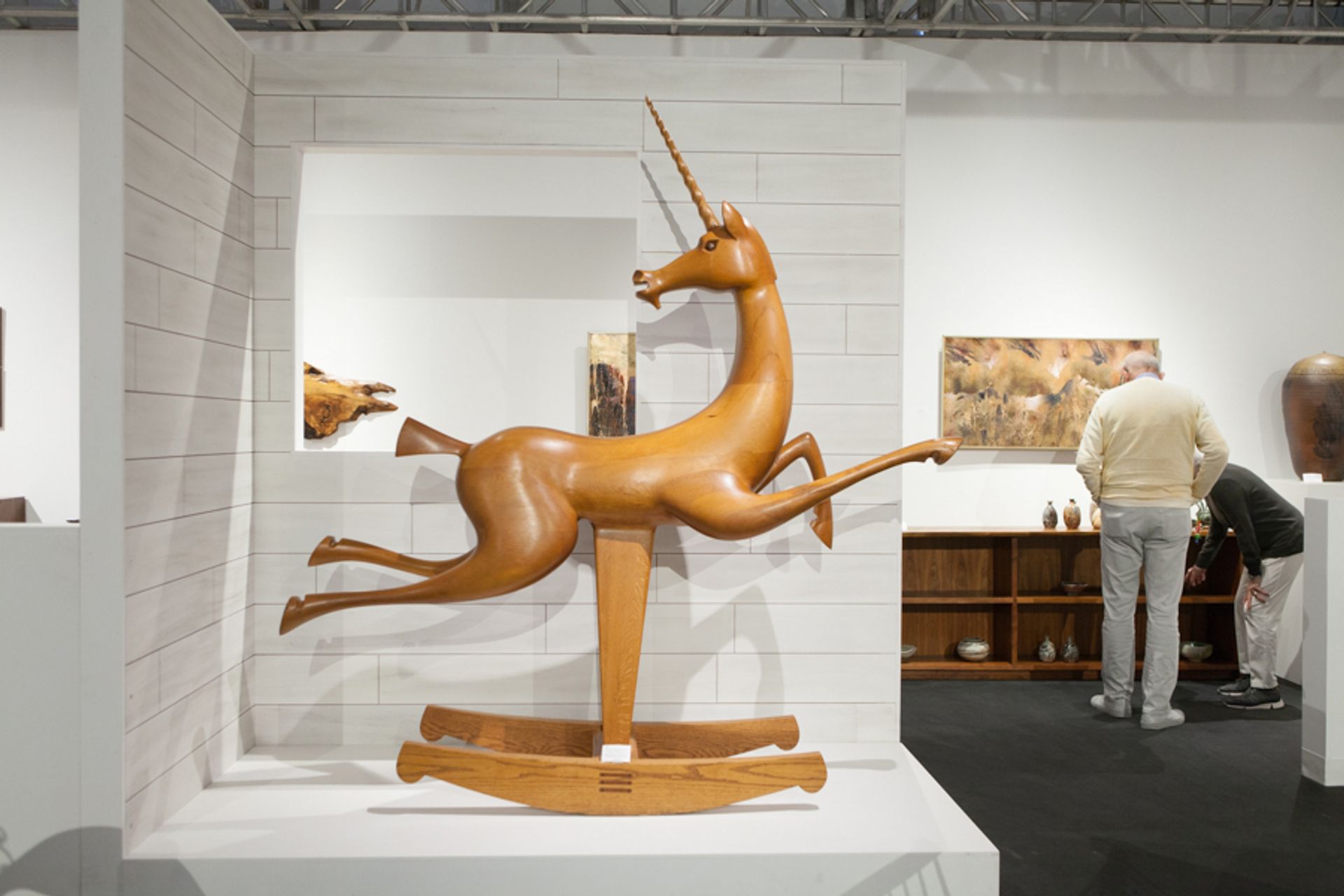
Hands up: who hopes this unicorn rocking-chair is waiting under their tree this Christmas? That was the case for the fashion designer Wayne Rogers in 1974, when his wife commissioned the work as a gift from the US designer Daniel Jackson. The 6ft-tall mythical creature—amusingly requested to be “life-sized”—was thought to be lost until it was recently rediscovered in a Florida estate sale. Daniel Jackson Rocking Unicorn (1974) Moderne Galleria; $180,000. Photo: © Vanessa Ruiz
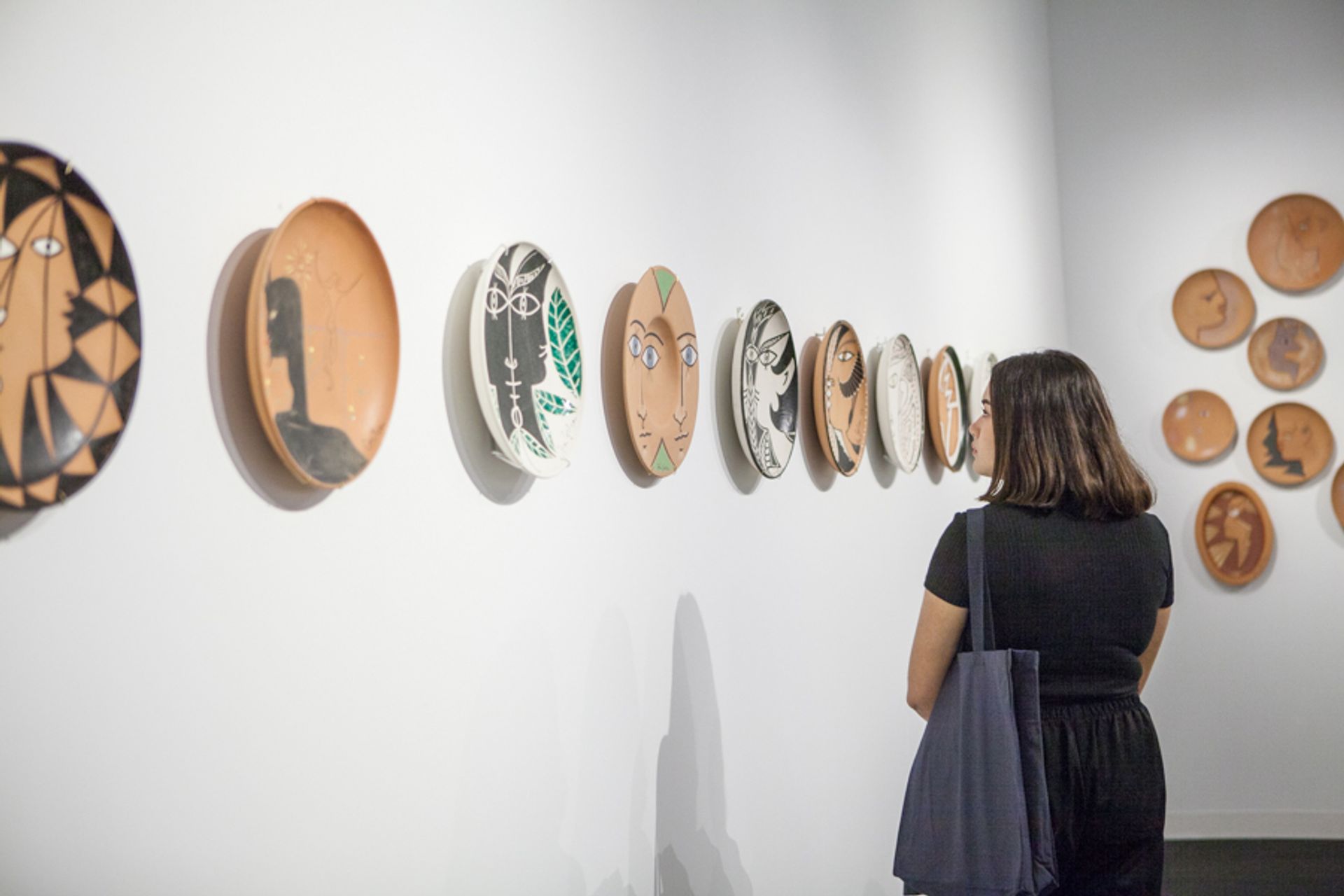
Jean Cocteau followed in Picasso’s footsteps by creating ceramics on the French Riviera, drawing designs (primarily inspired by Greek mythology) that were then created by the “genius” ceramicists Marie Madeleine Jolly and Philippe Madeline. Lebreton Gallery has reassembled around 60 of the 300-plus works he made. “He was tough to work with because he was an artist, not a ceramicist,” says the San Francisco gallery’s director, Alain Lebreton. Jean Cocteau Plates (1957-63) Lebreton Gallery; $14,000-$38,000. Photo: © Vanessa Ruiz
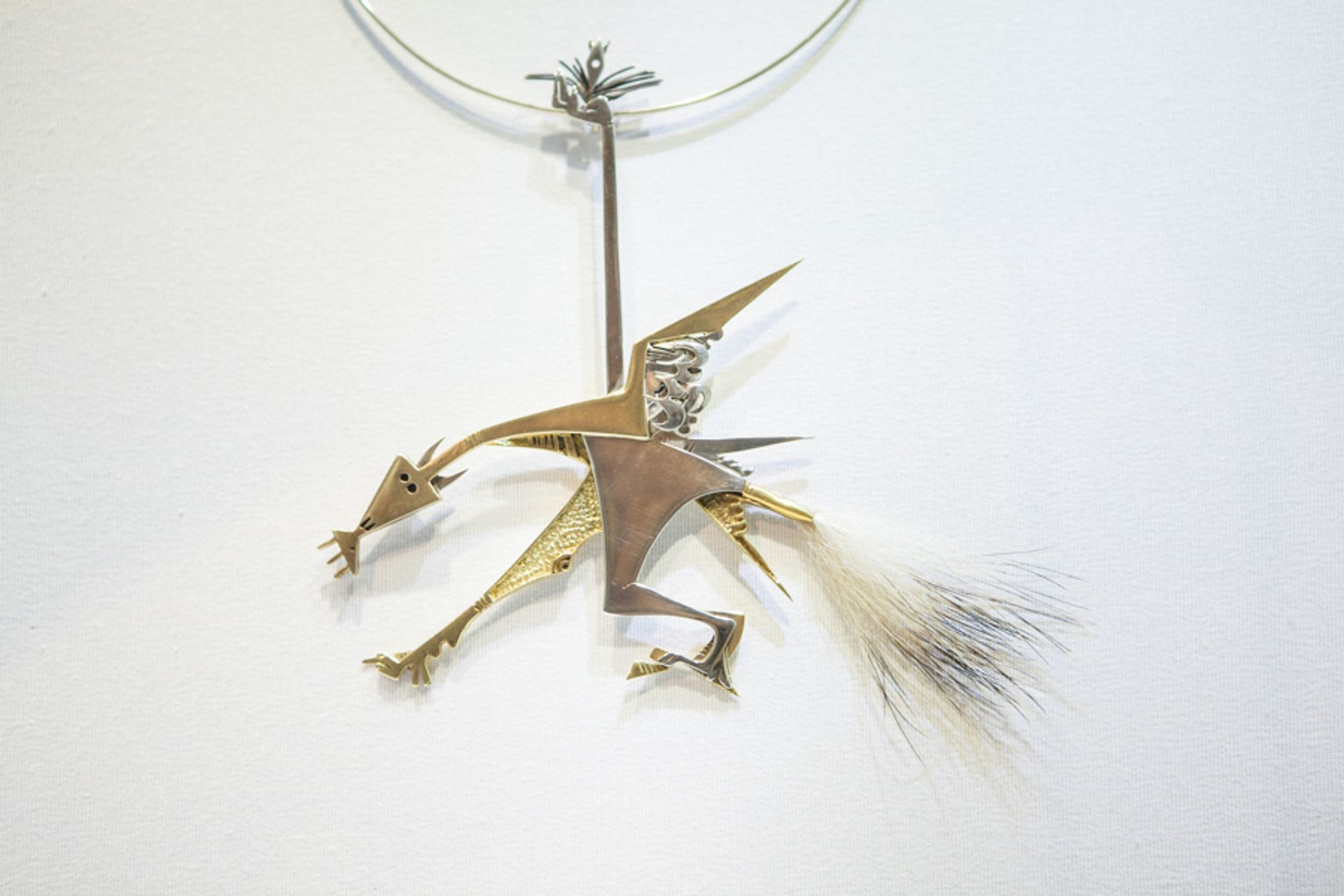
In 1972, the Cuban artist Wifredo Lam made ten Cubist-inspired jewels for a trade display at the Palazzo Strozzi in Florence. Hanging from the tiny torque of the Apocalyptic horse is a 14cm-long, 18-carat gold pendant showing a winged creature stretching up one hoof to prevent a US missile from landing on Cuba. “You have to have a slim neck; otherwise, the missile sticks into your throat,” says Martine Newby Haspeslagh, the director of London’s Didier gallery. Wifredo Lam Apocalyptic horse (1972) Didier; $160,000. Photo: © Vanessa Ruiz
It may look like a chic wooden cabin, particularly given that it accommodates a spacious fitness room, but this 6m by 6m structure was originally designed by the French architect Jean Prouvé to rehouse French families whose homes were bombed in the Second World War, and could be put together by a team of just three people in less than a day. The space now has an entirely different, more relaxed purpose, with areas set aside for yoga and meditation. Jean Prouvé 6 x 6 Demountable House (1944) Galerie Patrick Seguin; $1.25m. Photo: © Vanessa Ruiz
In pictures: must-see works at Design Miami
From lady lamps that light up at the touch of a nipple to experimental Italian design, here are some pieces from the 14th edition that caught our eye
